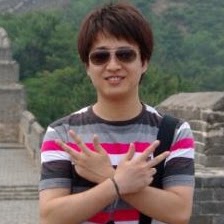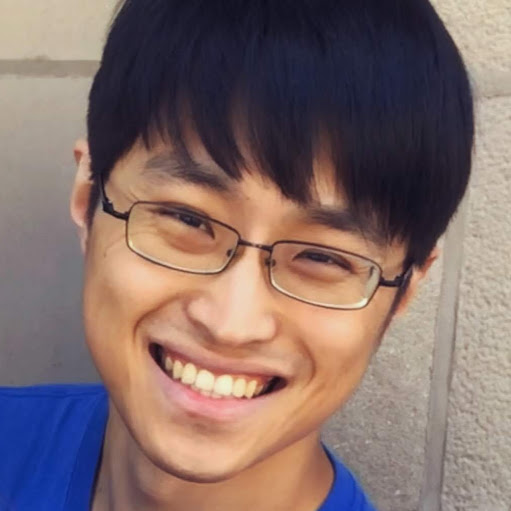Ming Juan Li
age ~54
from Issaquah, WA
- Also known as:
-
- Ming J Li
- Mingjuan L Li
- Juan Ming Li
- Juan Li Ming
- Min G Li
- Juan Li Mingjuan
- Li J Mingjuan
- Juan Liming
Ming Li Phones & Addresses
- Issaquah, WA
- Everett, WA
- Seattle, WA
- Snohomish, WA
- Lynnwood, WA
Lawyers & Attorneys

Ming Li - Lawyer
view sourceAddress:
Yingda Law Firm
(390)7111386 (Office)
(390)7111386 (Office)
Licenses:
New York - Currently registered 2012
Education:
The Sydney Law School
Medicine Doctors

Ming O. Li
view sourceSpecialties:
Endocrinology, Diabetes & Metabolism
Work:
Pacific Endocrinology Diabetes Health Center
55 N 13 St, San Jose, CA 95112
(408)9938764 (phone), (408)9938765 (fax)
55 N 13 St, San Jose, CA 95112
(408)9938764 (phone), (408)9938765 (fax)
Education:
Medical School
Capital Univ of Med Scis, Training Ctr of Gen Prac, Beijing City, China
Graduated: 1982
Capital Univ of Med Scis, Training Ctr of Gen Prac, Beijing City, China
Graduated: 1982
Conditions:
Diabetes Mellitus (DM)
Disorders of Lipoid Metabolism
Hyperthyroidism
Hypothyroidism
Metabolic Syndrome
Disorders of Lipoid Metabolism
Hyperthyroidism
Hypothyroidism
Metabolic Syndrome
Languages:
Chinese
English
English
Description:
Dr. Li graduated from the Capital Univ of Med Scis, Training Ctr of Gen Prac, Beijing City, China in 1982. She works in San Jose, CA and specializes in Endocrinology, Diabetes & Metabolism. Dr. Li is affiliated with Regional Medical Center Of San Jose.

Ming Li
view sourceSpecialties:
Endocrinology, Diabetes & Metabolism
Work:
Carl T Hayden VA Medical Center Endocrinology
650 E Indian School Rd, Phoenix, AZ 85012
(602)2775551 (phone), (602)2006004 (fax)
650 E Indian School Rd, Phoenix, AZ 85012
(602)2775551 (phone), (602)2006004 (fax)
Education:
Medical School
Beijing Med Univ, Beijing City, Beijing, China
Graduated: 1996
Beijing Med Univ, Beijing City, Beijing, China
Graduated: 1996
Languages:
English
Description:
Dr. Li graduated from the Beijing Med Univ, Beijing City, Beijing, China in 1996. He works in Phoenix, AZ and specializes in Endocrinology, Diabetes & Metabolism. Dr. Li is affiliated with Carl T Hayden VA Medical Center.

Ming Dong Li
view sourceSpecialties:
Acupuncturist
Work:
UCLA Medical GroupUCLA Center East West Medicine
2336 Santa Monica Blvd STE 301, Santa Monica, CA 90404
(310)9989118 (phone), (310)8299318 (fax)
2336 Santa Monica Blvd STE 301, Santa Monica, CA 90404
(310)9989118 (phone), (310)8299318 (fax)
Languages:
English
Spanish
Spanish
Description:
Dr. Li works in Santa Monica, CA and specializes in Acupuncturist. Dr. Li is affiliated with Ronald Reagan UCLA Medical Center and Santa Monica UCLA Medical Center.

Ming Jia Li
view sourceSpecialties:
Internal Medicine
Work:
Ohio State University Hospital Medicine
320 W 10 Ave STE M112, Columbus, OH 43210
(614)2937499 (phone), (614)3662360 (fax)
320 W 10 Ave STE M112, Columbus, OH 43210
(614)2937499 (phone), (614)3662360 (fax)
Languages:
English
Description:
Dr. Li works in Columbus, OH and specializes in Internal Medicine. Dr. Li is affiliated with Nationwide Childrens Hospital and Ohio State University Wexner Medical Center.

Ming Li
view source
Ming Li
view sourceName / Title
Company / Classification
Phones & Addresses
GLOBAL PROCESS CONTROLS, INC
BAMBOO HOUSE LEE INC
Associate
C J M Investment Property Advisors Inc
Real Estate Agent/Manager · Real Estate Appraisal
Real Estate Agent/Manager · Real Estate Appraisal
40 Lk Bellevue Dr, Bellevue, WA 98005
1530 140 Ave NE STE 200, Bellevue, WA 98005
(425)4546782, (425)4546789, (425)4543234
1530 140 Ave NE STE 200, Bellevue, WA 98005
(425)4546782, (425)4546789, (425)4543234
manager
Candragon LLC
INVESTMENT/CONSULTING/RESEARCH/MANAGEMENT
INVESTMENT/CONSULTING/RESEARCH/MANAGEMENT
President
COSMO IMAGE DEVELOPMENT (USA), INC
308 108 Ave NE #C-403, Bellevue, WA 98004
President, Secretary
Wealthcraft Systems Inc
Chairman, President, Treasurer, Director
Cosmo Image Development (USA), Inc
7961 SW 152 Ave, Miami, FL 33193
2162 NW Far Country Ln, Bellevue, WA 98027
2162 NW Far Country Ln, Bellevue, WA 98027
Us Patents
-
Noise Suppression Method Utilizing Motion Compensation For Ultrasound Images
view source -
US Patent:55031536, Apr 2, 1996
-
Filed:Jun 30, 1995
-
Appl. No.:8/491332
-
Inventors:Ming Li - Seattle WA
-
Assignee:Siemens Medical Systems, Inc. - Iselin NJ
-
International Classification:A61B 800
-
US Classification:12866108
-
Abstract:A method for measuring the interframe movement of pixels in a second ultrasoud image frame with respect to the pixels in a first ultrasoud image frame. The movement information may be displayed to provide enhanced information about the underlying physiology or to provide a temporally compounded image having reduced noise. In the preferred embodiment of the present invention, the pixels in that actually change between frames are identified. The first frame is divided into blocks and an estimated velocity computed for each block having a sufficient number of pixels that actually moved between the first and second frames. After all of the velocity estimates have been computed, blocks having questionable velocity estimates are identified. Blocks for which the velocity estimate was questionable are then provided with a velocity estimate by interpolating the velocity vectors of the nearby blocks having valid velocity estimates. The preferred method for estimating the velocity utilizes a modified optical flow computation that is more stable than prior art optical flow models.
-
System And Method For 3-D Medical Imaging Using 2-D Scan Data
view source -
US Patent:55821731, Dec 10, 1996
-
Filed:Sep 18, 1995
-
Appl. No.:8/529778
-
Inventors:Ming Li - Seattle WA
-
Assignee:Siemens Medical Systems, Inc. - Iselin NJ
-
International Classification:A61B 800
-
US Classification:12866007
-
Abstract:A region of tissue is scanned as a series of 2-D frames. The correlation of substantially homogeneous speckle regions in the frames is determined and is compared with a precalibrated speckle correlation-versus-distance function to give an estimate of the distance between the frames. In some applications, the frames are partitioned into sub-frames, whose correlation values and distances are combined according to predetermined functions to give a distance estimate between the frames as a whole. The reliability of the distance estimates is improved and evaluated in various ways, for example, by comparing combinations of possible distances from end frames via intermediate frames, and by comparing computed frame or sub-frame velocities with a known or estimated transducer velocity. Once the relative distances of the 2-D frames are estimated, a 3-D image is compiled using registration techniques. Image frames need not be parallel.
-
Phase Aberration Corrections Utilizing Color Flow Processors
view source -
US Patent:54233186, Jun 13, 1995
-
Filed:Jun 23, 1994
-
Appl. No.:8/264545
-
Inventors:Ming Li - Seattle WA
Jin Kim - Issaquah WA -
Assignee:Siemens Medical Systems, Inc. - Iselin NJ
-
International Classification:A61B 800
-
US Classification:12866101
-
Abstract:Apparatus for adaptive phase aberration correction of wave distortions caused by tissue inhomogeneities in ultrasound images. In accordance with the present invention, auto-correlation apparatus in multiple, parallel, color flow processors compute a cross-correlation which is used to correct distortions in real time.
-
Beamformer For Phase Aberration Correction
view source -
US Patent:55666752, Oct 22, 1996
-
Filed:Jun 30, 1995
-
Appl. No.:8/497176
-
Inventors:Ming Li - Seattle WA
Levin Nock - Issaquah WA -
Assignee:Siemens Medical Systems, Inc. - Iselin NJ
-
International Classification:A61B 800
-
US Classification:12866101
-
Abstract:An ultrasonic imaging system is provided that effectively corrects for inhomogeneities in the imaged media. The ultrasonic imaging system comprises a transducer array having a plurality of transducer elements each being separately operable to provide an ultrasonic pulse in response to a driving signal and to provide a corresponding echo signal in response to a received echo based on the ultrasonic pulse. A transmitter is coupled to the transducer array and provides the driving signal to each respective one of the transducer elements. The driving signals define a steered beam of the transducer array. A receiver is coupled to the transducer array and receives the echo signal from each respective one of the transducer elements. The receiver includes a beamformer section that produces a single matched and summed signal from the echo signals of the plurality of transducer elements. The beamformer section comprises a plurality of processing modules coupled in a cascading arrangement with separate processing stages.
-
System And Method For Topographic Mapping Of Ultrasonic Image Displays
view source -
US Patent:55402283, Jul 30, 1996
-
Filed:Sep 29, 1995
-
Appl. No.:8/536409
-
Inventors:Ming Li - Seattle WA
-
Assignee:Siemens Medical Systems, Inc. - Iselin NJ
-
International Classification:A61B 800
-
US Classification:12866007
-
Abstract:An interrogation region of a patient's body is scanned with an ultrasonic probe. At least one input data frame is generated representing the scanned interrogation region as a pattern of image elements, each with a corresponding input intensity value, that are stored in a memory. The input data frame is then displayed as a pattern of displayed intensity values, which the processor calculates as combination of a geometry-independent function of an ambient light input array and a geometry-dependent function of the input intensity values, in which the geometry-dependent function includes a coefficient term that multiplies the input intensity array and that itself is a function of the input intensity values. As part of the coefficient term is a filtered input data array, which results from noise-floor filtering, low-pass filtering, and surface normal vector averaging of the input intensity array. In a preferred embodiment of the invention, the user selects an assumed light source vector, and/or an assumed viewer direction vector, which are the incorporated into the geometry-dependent function used to calculate displayed intensity values.
-
Acoustic Display System And Method For Ultrasonic Imaging
view source -
US Patent:56221720, Apr 22, 1997
-
Filed:Sep 29, 1995
-
Appl. No.:8/536509
-
Inventors:Ming Li - Seattle WA
Jin Kim - Issaquah WA -
Assignee:Siemens Medical Systems, Inc. - Iselin NJ
-
International Classification:A61B 800
-
US Classification:1286611
-
Abstract:An ultrasonic imaging system has a three-dimensional acoustic display. Beam-formed ultrasound scan signals are separated into channel signals and are then filtered using head-related transfer function (HRTF) filters. An HRTF is associated with each of several points in an interrogation region. A filter coefficient processor selects, for each channel signal, a set of HRTF filter parameters according to which sample volume the channel signal comes from. Each HRTF parameter set defines left-ear and right-ear response functions to a calibration sound generated at a calibration point in a calibration space; the calibration point itself corresponds to a predetermined position in the interrogation region. The HRTF-filtered channel signals are then combined into left and right audio output signals which drive left and right speakers that the user listens to while performing the ultrasound scan. The calibration points in the calibration space are mapped to respective reference sample volumes located in a predetermined ultrasonic interrogation region.
-
Enhanced Data Aggregation Techniques For Anomaly Detection And Analysis
view source -
US Patent:20190207962, Jul 4, 2019
-
Filed:Dec 28, 2017
-
Appl. No.:15/857102
-
Inventors:- Redmond WA, US
Ming LI - Sammamish WA, US
Lingwei LI - Sammamish WA, US
Jian LI - Bellevue WA, US -
International Classification:H04L 29/06
G06N 5/02
G06F 21/55
H04L 12/26 -
Abstract:An anomaly detection system that performs data aggregation against user-defined subsets of multiple variable columns within an aggregation table. Various embodiments enable users to generate rules by defining values for user-defined subsets of variables of an aggregation table that is used to deploy numerous other rules. Thus, if an aggregation table includes hundreds of columns each associated with discrete variables, a user may generate rules for aggregating data into specific variable columns of the aggregation table rather than into all of the hundreds of variable columns. The user may also define a sliding time window for the rule to be applied against and to set an occurrence threshold for the user-defined sliding time window. When a rule is triggered, the anomaly detection system may automatically generate a post-analysis table by preemptively and selectively populating the post-analysis table with values of event data indicated by a cardinality threshold and/or filter parameters.
-
Techniques For Url Archiving While Browsing A Web Page
view source -
US Patent:20190179967, Jun 13, 2019
-
Filed:Dec 8, 2017
-
Appl. No.:15/836468
-
Inventors:- Menlo Park CA, US
Ming Fei Li - Seattle WA, US
Prakash Ahuja - Redmond WA, US
Yue Cai - Kirkland WA, US
Sean Michael Wiese - Seattle WA, US
Yi-Lin Jao - Seattle WA, US
Ziqin Wang - Seattle WA, US -
International Classification:G06F 17/30
H04L 29/08 -
Abstract:Techniques are provided for enhancing a user's browsing experience, especially when the user is browsing third party websites via an application. For example, a user may use the application to browse web pages served from a third party website that is associated with a particular domain. While browsing the third party web pages, the user may save a URL corresponding to a third party web page that the user is currently viewing. In this manner, the user may store one or more URLs corresponding to web pages served from the third party website and/or served from multiple different third party domains browsed by the user. The saved URLs may be associated with the user. When the user browses web pages associated with a particular domain, a user selectable option may be provided that enables the user to see URLs stored for the user that are associated with that particular domain. The user may then select a particular displayed URL to access the web page corresponding to the selected URL.
Myspace
Youtube
Plaxo

Li Ming
view source
li li ming
view sourcebeijing

li ming
view source西华师范大学

li ming
view sourceNumber One
Googleplus

Ming Li
Work:
California State University Fresno - Assistant Professor (2006)
Education:
The University of Texas at Dallas - Computer Science, Shanghai Jiao Tong University - Thermal Energy Engineering

Ming Li
Education:
Tulane University School of Medicine - Medicine, Georgetown University, University of Southern California, University of California, Berkeley

Ming Li
Work:
WindRiver - System Engineer
ZTE - Engineer (2009-2009)
ZTE - Engineer (2009-2009)

Ming Li
Work:
Johns Hopkins University - Research Technologist (2010)
Education:
Washington University in St. Louis - Neuroscience

Ming Li
Work:
IBM - Worker
Education:
Home School - Eat and Sleep
About:
I m too lazy to write down something....
Tagline:
Google me.

Ming Li
Work:
Google
Education:
Carnegie Mellon University

Ming Li
Education:
Lawson

Ming Li
Education:
FDU, SDU
Get Report for Ming Juan Li from Issaquah, WA, age ~54











